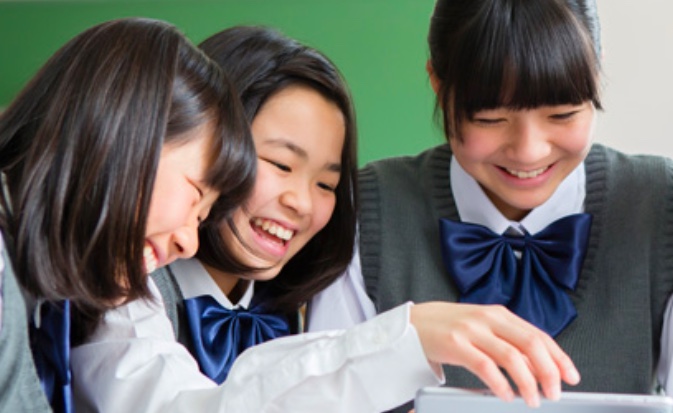Many parents may consider getting their children a smartphone in junior high school. There are two main types of smartphones: iPhone and Android. In this article, we will explain the features of each.
- Must-have features of a smartphone for a junior high school student
- Advantages of an iPhone for junior high school students
- Disadvantages of an iPhone for junior high school students
- Advantages of Android phones for junior high school students
- Disadvantages of Android phones for junior high school students
- Which smartphone is better for a junior high school student to have, an iPhone or an Android phone?
Must-have features of a smartphone for a junior high school student
When choosing a smartphone for your junior high school child, let’s first consider the features. You as a parent or guardian, you must consider if you allow your child to have an unprotected smartphone. They might be involved in an incident or accident through the internet or social networking services.
Not only that… It has happened that children are charged high fees for purchasing apps or paying for games as much as they want. It is the parent’s duty to help their children learn how to use smartphones while avoiding such situations.
Let’s talk about the minimum functions that has to be installed.
Filtering
The first thing that comes to mind is filtering.
In 2017, a law called the “Youth Internet Environment Improvement Act” was revised and took effect on February 2018. This law requires that internet usage status should be properly monitored, and managed through the use of information filtering software and other methods, and that efforts be made to promote the acquisition of the ability to properly use the internet. The law states that it is the responsibility of parents and guardians to properly monitor internet use through the use of harmful information filtering software and other methods, and promote the acquisition of skills to use it appropriately.
When a smartphone is given to a child under the age of 18, the retailer must explain and provide the necessity of filtering services.
No matter how mature they may be, junior high school students are still at an age where they need a guardian and have not yet fully mastered social common sense. To use smartphones safely, filtering is essential for junior high school students to identify sites that are inappropriate, undesirable education, harmful, fraudulent, or otherwise criminal, and to block them from accessing or viewing these sites. In addition, filtering can also disable age-restricted, expensive, charged, or harmful applications and limit the amount of time spent on the internet.
Smartphones are convenient tools, but their use also comes with risks. It is important for junior high school students to have filtering applied and for their parents to guide them in an appropriate usage.
Restrictions on Use
Although the filtering functions can be set, it is also advisable to take measures to prevent sleep deprivation and smartphone dependence due to excessive smartphone use, such as setting predetermined times for smartphone use.
For example, if you set the hours between 9 p.m. and 7 a.m, only the call function and minimally necessary applications can be used. You will be less likely to stay up late. Some devices and apps have a function that allows you to set a time limit for each day of the week. By using this function, you can control the time limit to be shorter on weekdays and longer on weekends, which is more in line with reality.
Location, Information and Confirmation
Many parents say that their children have smartphones because they can check their location. It is true that junior high school students participate in club activities and have more opportunities to go out with friends. They may have to come home later than before because of cram school or other lessons. In addition, there is an increase in the number of large-scale natural disasters, and students may be involved in unexpected accidents or incidents. At such times, if you find yourself in a situation where you are late and cannot be reached, all you can do is worry.
However, if you know where they are, you can do something about it. In this age of convenience, it is important to keep track of your children’s activities and make sure they are safe.
As for the three functions we have mentioned, you can set them up on either iPhone or Android. There is no difference in this regard, so you can choose either one.
Advantages of an iPhone for junior high school students
Let’s take a look at the advantages and disadvantages of the iPhone and Android, respectively. First, let’s start with the advantages of the iPhone.
If we assume that junior high school students will be using the iPhone, one of the major advantages is the high level of security regarding the use of apps.
The iPhone’s operating system is Apple’s iOS, and apps for iOS must go through Apple’s strict screening process before it will be released to the public.
In the case of PCs, malicious software with viruses is available on the market, but the risk of installing such apps is considerably reduced. This can be prevented by using a filtering function, but with the advanced technology at such a rapid pace these days, you never know where the pitfalls may lie. The fact that apps are sold in highly secure locations and lead to self-protection seems to be a big advantage.
Another advantage may be that the usage rate tends to be higher among high school students and adult. The high usage rate means that if there are any questions about how to operate the phone, it is easy to learn. In addition, there is a wide variety of smartphone cases and accessories. iPhone has consistently pursued ease of operation since its initial release. The intuitive operation of the iPhone is another advantage.
Also, if a parent or guardian uses an iPhone, GPS and parental control functions are available as standard features.
GPS corresponds to “location information” among the “wanted features” I explained earlier, and parental control is a feature that allows parents to manage the smartphone their child has. Specifically, the filtering I mentioned earlier, limiting the time of use, restricting app downloads, etc.
The word “control” may sound like a clampdown, but the reality is that there are countless websites that are not appropriate for junior high school students to view, even if it is just one website. It is too dangerous to send your child to unprotected websites, such as phishing sites that have been cleverly designed. Parents can be thankful that there are systems in place to prevent their children from getting involved in crimes and accidents, and from associating with people with malicious intent.
Disadvantages of an iPhone for junior high school students
One of the disadvantages of the iPhone that many people cite is the high price of the device. The price may be considered a bit hesitant for a junior high school student to purchase a phone on their own.
However, this is the case with the latest models. If you choose a model that is a so-called “model-out”, the price will be a little lower. In addition, if the parents buy a new model and their child uses the hand-me-downs, the cost can be reduced, and in many cases, this is what happens.
Another disadvantage is that both parents use Android phones. If both parties are on iPhones, filtering and locking functions can be done remotely, but if the parents are on Android, it may not be as smooth as it could be.
Advantages of Android phones for junior high school students
Next, let’s look at Android.
The obvious advantage of going with Android is the wide variety of models and designs. Many manufacturers produce handsets, and it is also important to note that there are many relatively inexpensive handsets available, including budget smartphones. In many cases, junior high and high school students are making their smartphone debut with a budget smartphone.
Another advantage is the ability to customize the phone to one’s specifications. Since customization features are not available on iPhones, we hear many people say, “I chose Android because I want to customize it. With Android, it is easy to edit the appearance and functions of the home screen and freely change the position of icons. Another advantage is that most devices have an SD card (microSD card) slot (iPhones do not have an SD card slot), making it easier to deal with capacity shortages.
Both customization and SD cards may not be necessary for junior high school students. However, in the long run, there should be no harm in learning a few things early on.
Disadvantages of Android phones for junior high school students
One disadvantage is that different models have different performance and operation methods. iPhones are only made by Apple, but each manufacturer of Android phones sells its model. There are a wide variety of models, which is an advantage in terms of finding a smartphone that you like, but it can also cause problems when you ask someone else how to use it and the conversation doesn’t go well.
Furthermore, Android applications are downloaded through Google Play, which is operated by Google Inc. and is said to have faster screening and more lenient screening standards than the App Store. In other words, there is still some security concern. If you want your junior high school child to have a smartphone, it is important to manage it properly with filtering and other functions.
Which smartphone is better for a junior high school student to have, an iPhone or an Android phone?
As we have mentioned, each has its own merits and demerits, and each has its advantages and disadvantages. After carefully considering this, it would be reasonable to choose the same model as the parent or guardian. This way, you can share the operation and usage methods, and filtering and other settings can be made smoothly.
It is important to discuss with the child in advance what restrictions will be placed on the filtering, and what kind of content the parent/guardian will understand so that both parties can be satisfied with the results. To this end, it would be a good idea to teach basic knowledge about the Internet and SNS, including the dangerous aspects.
Children may already have the information and may say, “I know that without being told,” but it is the role and responsibility of parents and guardians to protect their children.
It is your responsibility to protect your children, and you should set your own rules as necessary. For example, “Limit use to one hour a day,” “Ask your parents for permission before registering for social networking services,” “Turn off the phone while eating,” “Do not take the phone to school,” etc. It is also effective to put the penalties for not following the rules in writing.
Whether it is an iPhone or an Android phone, it is important to provide a safe environment for smartphone use.
If you are not sure whether to choose an iPhone or an Android phone for your junior high school child, please think about it based on what we have told you. There are advantages and disadvantages to each, and the point of view from which you choose will depend on which model your child’s parents or guardians are using. With Tone Mobile, you can choose either iPhone or Android.




Comments